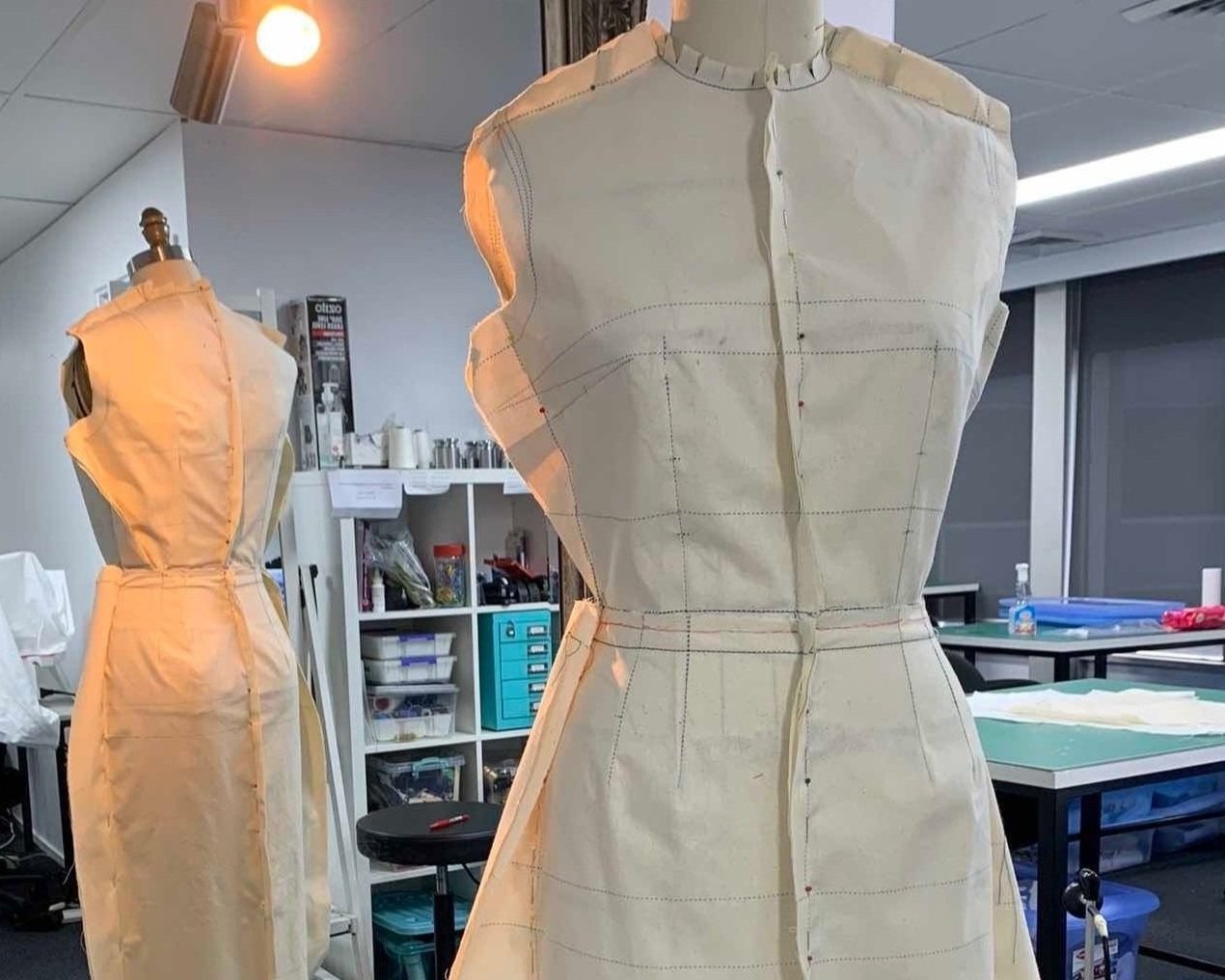RYN
BORN TO SEW
Ryn is one of our most advanced students, and she’s amassed the most breathtaking fabric stash! We’re always excited to see what gorgeous textiles she’ll unveil for her next masterpiece. With an eye for quality and an appreciation for exquisite materials, every garment she creates is truly something special. She sources fabrics from all over — including Minerva’s Bower in Katoomba, a favourite for natural fibres and a Friend of CAFA offering a student discount. And talk about keen — Ryn travels from the Blue Mountains to attend class every week!
Ryn’s beautiful border print dress — the amazing silk is from Muse Fabrics in Sydney
CAFA: How did you learn to sew?
R: My first sewing memory is from when I was five or six, helping my mother — a couture dressmaker — overcast seams to neaten fabric edges. I disliked it at the time and didn’t return to sewing for decades.
My mother emigrated from Greece after the war. She had trained in a couture atelier and spoke no English when she arrived. Her first job came through hand signals and determination. She worked in couture for 60 years, eventually teaching others while learning English herself.
In my forties, I picked up sewing again to make embroidered dresses for my daughter. My mother began teaching me once more, but she was caring for my father and later became unwell, so I missed that precious chance. Still, she passed on her love for beautiful garments — to her, mass-produced was a dirty word.
Ryn’s daughter is the lucky recipient of many of her beautiful creations.
CAFA: How would you rate your skills when your started at CAFA?
R: I was an intermediate sewer using commercial patterns, but I struggled to get a good fit. The proportions of many designs didn’t suit me, and I didn’t know how to adjust the styles to make them work.
Ryn is particularly interested in vintage designer patterns, such as this find by Givenchy, modelled by Audrey Hepburn and featured in the McCall's Pattern Book Vacation 1956.
CAFA: What did you hope to learn when you started?
R: I wanted to learn proper fitting and high-end ready-to-wear sewing techniques. My mother never compromised on fit, and she firmly impressed that value on me.
You guesed it .. Ryn’s daughter scores another amazing dress. The beautiful Givenchy design comes to life six decades after its debut. How beautiful is this?
CAFA: What made you choose the Diploma program?
R: The course builds knowledge systematically and will give me the skills to pattern make and sew any garment I choose. I also have the flexibility to branch off for special projects and create pieces as inspiration strikes.
CAFA: What skills have you learnt at CAFA?
R:
Patience is everything — taking my time, being accurate and properly marking during prep makes all the difference. When I do that, the rest tends to fall into place.
Mistakes happen and that’s okay. I’ve learned I can fix them and keep going — it’s all part of the process.
I don’t have to accept a shoddy garment. If it’s not right, I can keep working on it until it is.
Sewing will become my retirement hobby and I love learning. My fabric stash is growing steadily, with beautiful quality pieces — some bought at great prices from fellow students.
Sometimes it takes multiple toiles to get a beautiful fit and that’s completely worth it.
Don’t skip basting — it saves time and heartbreak in the long run.
“Measure twice, cut once” is a rule I live by.
Investing in good tools and a quality sewing machine is essential — spend what you can afford.
Classes are fun and give me a creative escape.
And meeting like-minded sewists at Frocktails? This is always a highlight and I’m looking forward to the next one.
CAFA: What do you now have skills in?
R: I’ve developed skills in working with vintage designer patterns, including making thoughtful alterations to improve fit and wearability. I’m confident in flat pattern making and applying couture sewing techniques. I’ve also learned to handle high-end, challenging fabrics and to use interlining for structure and finish. Careful pattern placement is another area I now approach with precision and confidence.
CAFA: What garments have you sewn?
Garments sewn.
Vintage eveningwear for my daughter
Diploma exercises
Dress with border print
Jackets








